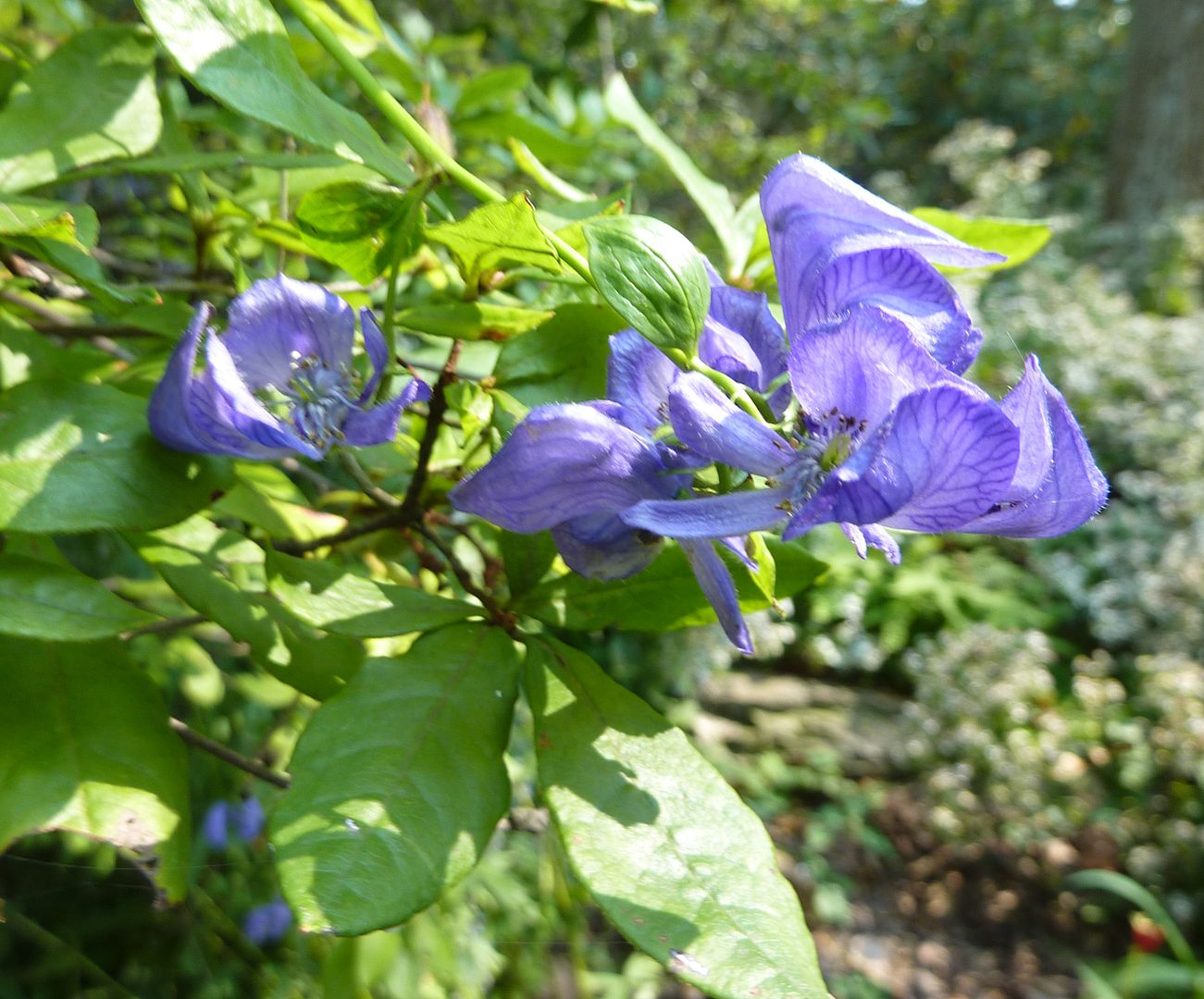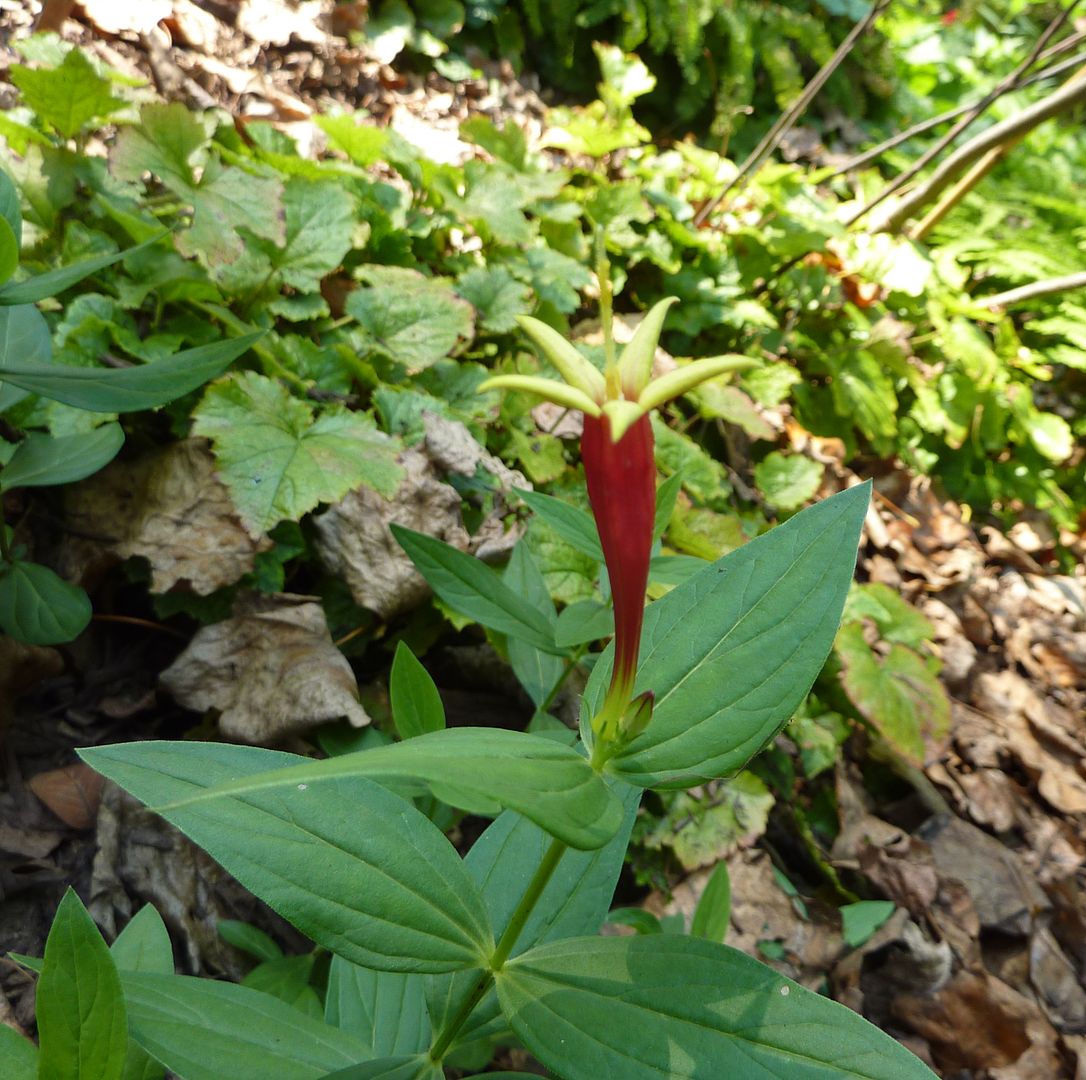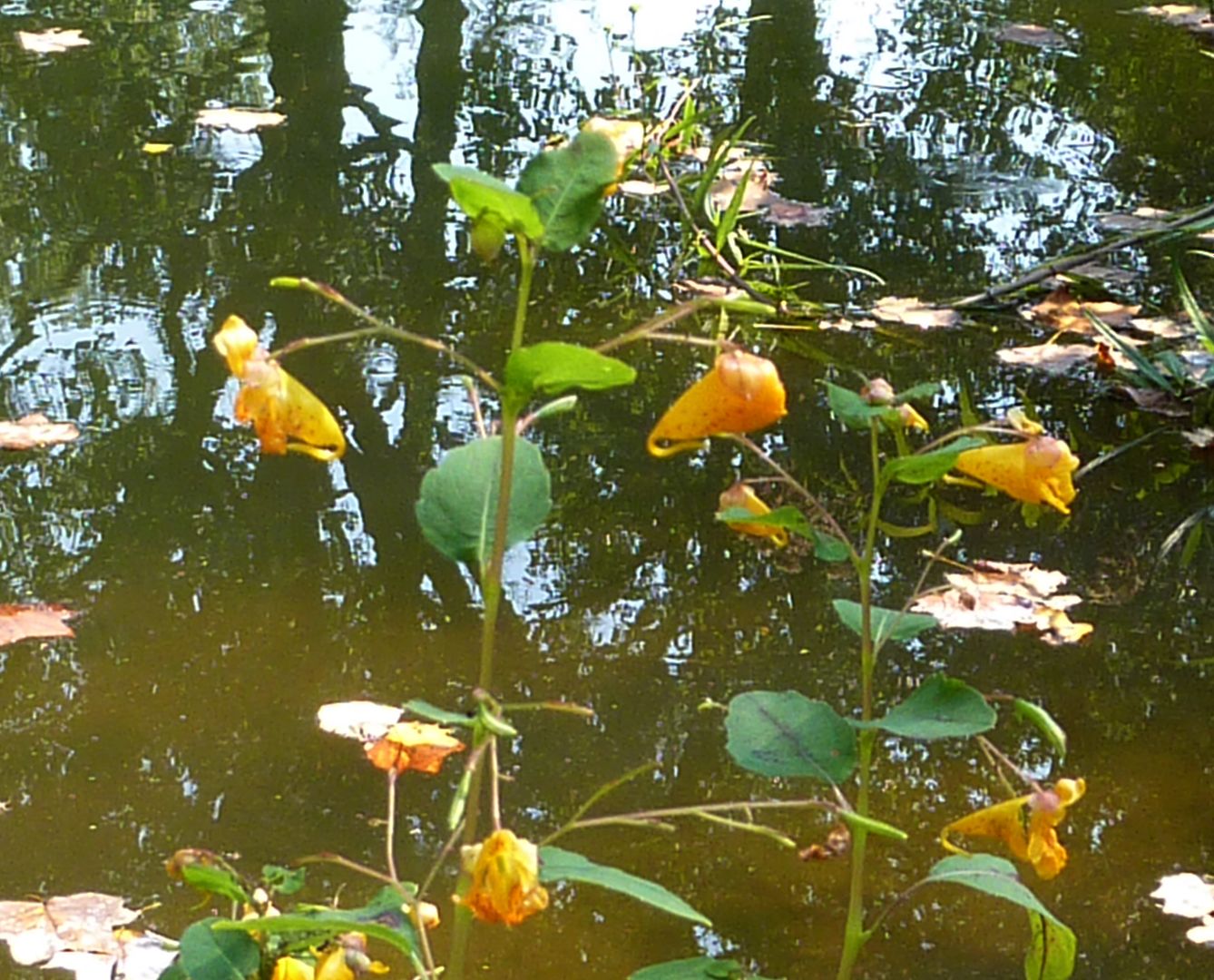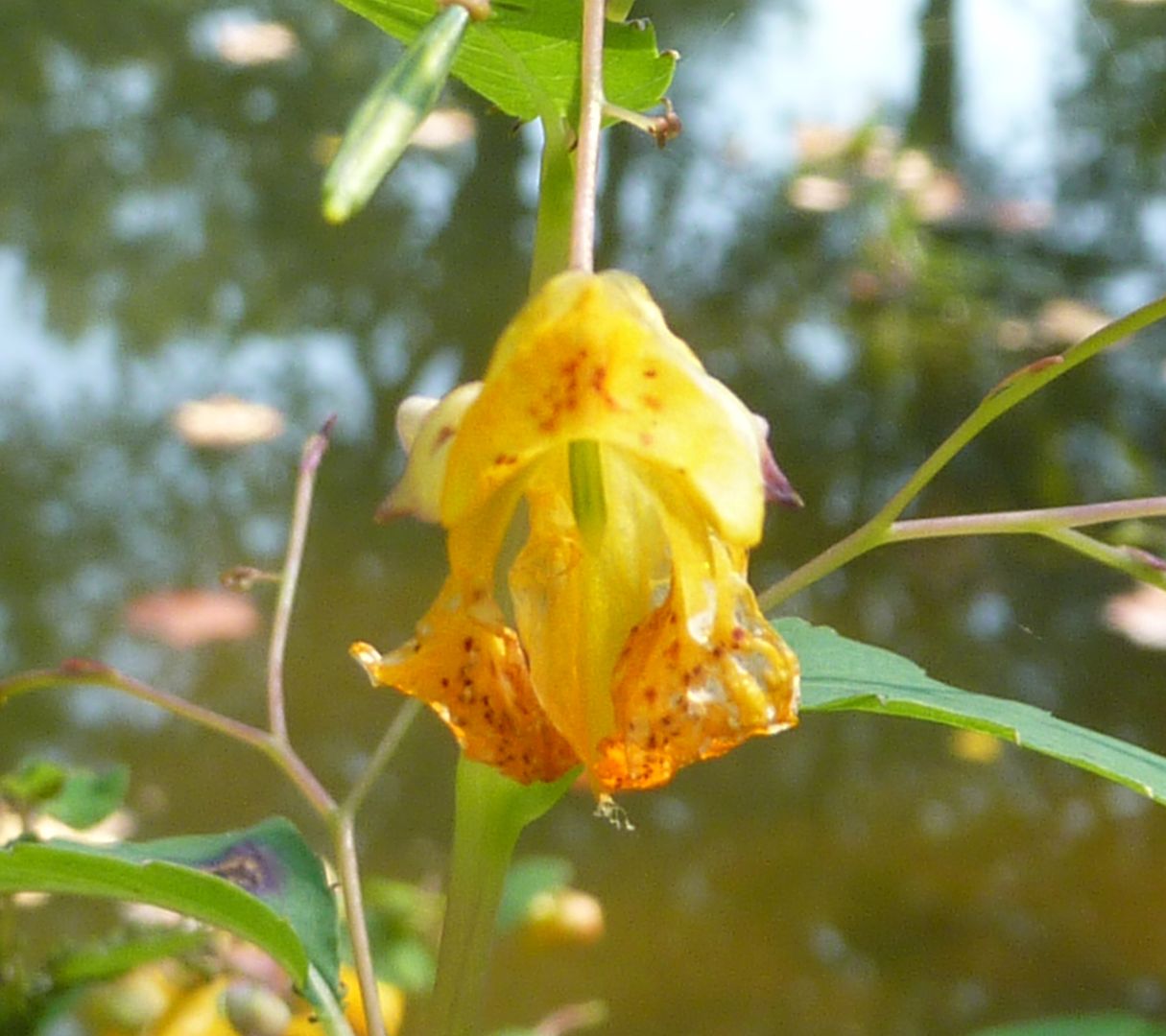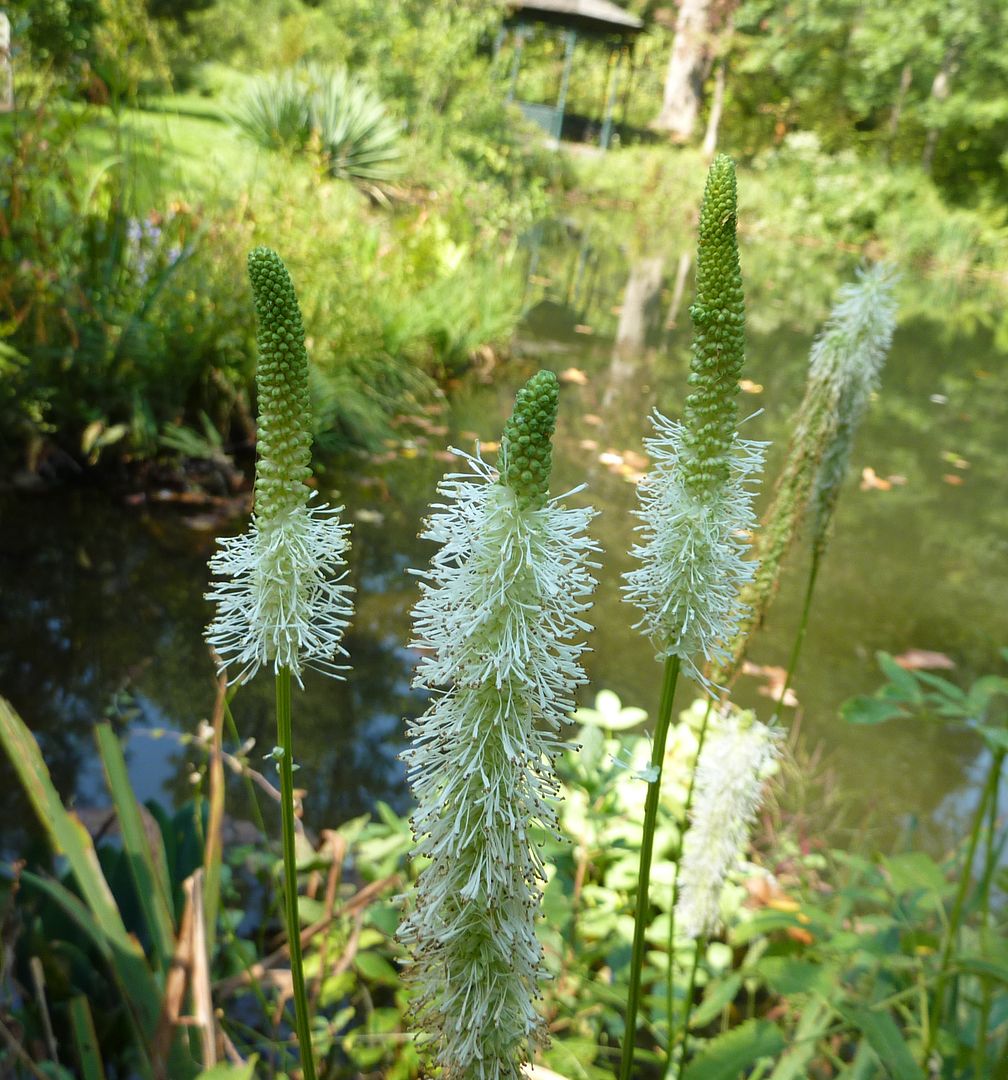By now I had found enough new plants I'd never herd of or seen in person that I fully felt this was worth the $10 the class cost. Actually the plant they give you at the end was worth that much. Let's continue on.
Chelone lyonii, Pink Turtle Head. Not to be confused with...
Chelone glabra, White Turtle Head. Both of these are marvelous plants. I think of them as a native form of snap dragon however I've come to find they like it wet and can't survive in dry conditions. I don't know if this is right or not but at the Mt. Cuba Center they were mostly in places near the pond, though a few were up hill some, but as you can see with the Pink Turtle Head they were being watered.
Aconitum uncinatum, Wild Monkshood. This isn't the best specimen of this plant they had there. The common names comes from the irregular shape of the flower petals.
Here you can see the hints of blue from the flowers and nearly imposable to make out foliage of the vine itself. This plant dotted all over the gardens as an accent color. Some of the other plants there had blue flowers all over the vine while this one only had them at the tips of new growth. The fuller vines were attractive to butterflies including the Monarch however that photo didn't turn out. This is a plant I'd be interested in trying out.
Another plant they had patches of here and there was Spigelia marilandica, Indian Pink. Supposedly this one is beloved by hummingbirds and when you look at the flower it's easy to see why.
A downside to the plant though is they produce very few flowers. On the upside though when pollination is successful they make exploding seed pods. Those are always fun!
Right up against the pond, (and just about every road side down there!) was Impatiens capensis, Jewelweed!
This is another beloved by hummingbirds. Growing it for the flowers along won't kill you either. This is one I almost bought this year. The thing that held me back though was it's an annual. As with all Impatiens they have exploding seed pods. Seeds take two years to germinate. So patches of this plant will come and go in 3 year rotations.
The other common name to this plant is Touch Me Not because it's related to poison ivy. However, people seem to be touching it nonstop for it's anti poison ivy properties. Apparently the sap to this plant counters that of poison ivy. I don't know if this is true though.
Lobelia siphilitica, Blue Lobelia. This was a nice spot of blue growing by the pond. It's a shame I didn't get any better pictures.
Sanguisorba canadensis, Canadian Burnet. This is one I always hear bees love and yet when I saw it growing there it had no bees on it. Not one. There were quite a few of these clumps of flower stalks too. Not a single bees was on it though. Maybe it has to be a certain time of day or different kind of bee but I just didn't get why it wasn't being loved by bees. I came pretty close to buying this plant and now I'm having second thought.
I'll have part 3 up sometime tomorrow. Let me just say though that standing over the pond there with all the flowers around was the most relaxed I'd felt in a long time. I'm not someone who's stressed out constantly so it's weird that the whole sensation of being relaxed swept over me. I could seriously see a yoga class or something on part with that taking place here.


